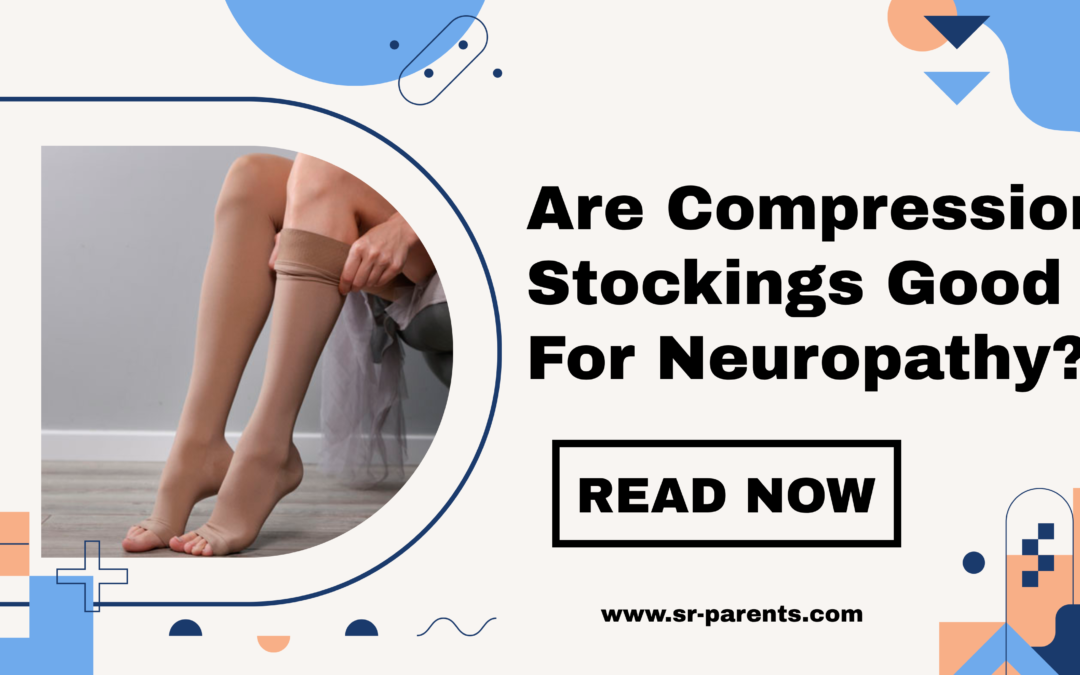Poor circulation can lead to organ damage, poor brain function, and even lower leg amputation! To treat poor circulation problems, doctors often recommend special socks. But are compression stockings good for neuropathy? In fact, doctors advise that these special socks offer a good treatment option for neuropathy, too.
Contents
My personal experience
My own mother wore compression stockings for many years to help with her poor circulation, leg swelling, and varicose veins. Although she had always been quite active, a difficult pregnancy had kept her bedridden for weeks, leading to health problems. These special massaging socks gave her much relief and even allowed her to bowl well for decades later.
After his stroke, my Dad’s activity level was also restricted for a time. His doctor suggested he use compression stockings and Dad complied. His legs, often sore from the swelling, became easier to move. These stockings gave him years of relief from what could have been quite debilitating following his stroke.
They also taught me quite a bit about the medical aid. As I helped Dad put his stockings on and off each day, I noticed the difference in his legs. The results were quite convincing. And while these special socks can be difficult to learn to put on, they are well worth it.
Are Compression Stockings Good for Neuropathy?
Evaluating the Relief & Benefits
Are you tired of the constant pain, numbness, and discomfort caused by neuropathy? You’re not alone. Many people struggle with neuropathy symptoms, but there’s a solution that can help bring you relief: compression stockings. In this comprehensive guide, we’ll explore the benefits of compression stockings for neuropathy and answer the question, “are compression stockings good for neuropathy?” From understanding the science behind compression therapy to choosing the right compression level and features for maximum relief, we’ve got you covered.
Key Takeaways
- Compression stockings provide support, comfort and enhanced blood circulation for neuropathy management.
- Clinical studies suggest compression therapy can reduce symptoms of diabetic neuropathy. Choose the right level of compression with a doctor’s advice to ensure maximum relief.
- Look for features such as moisture-wicking fabric, non-binding tops and seamless designs when selecting the best compression stockings for your needs.
The Role of Compression Stockings in Neuropathy Management
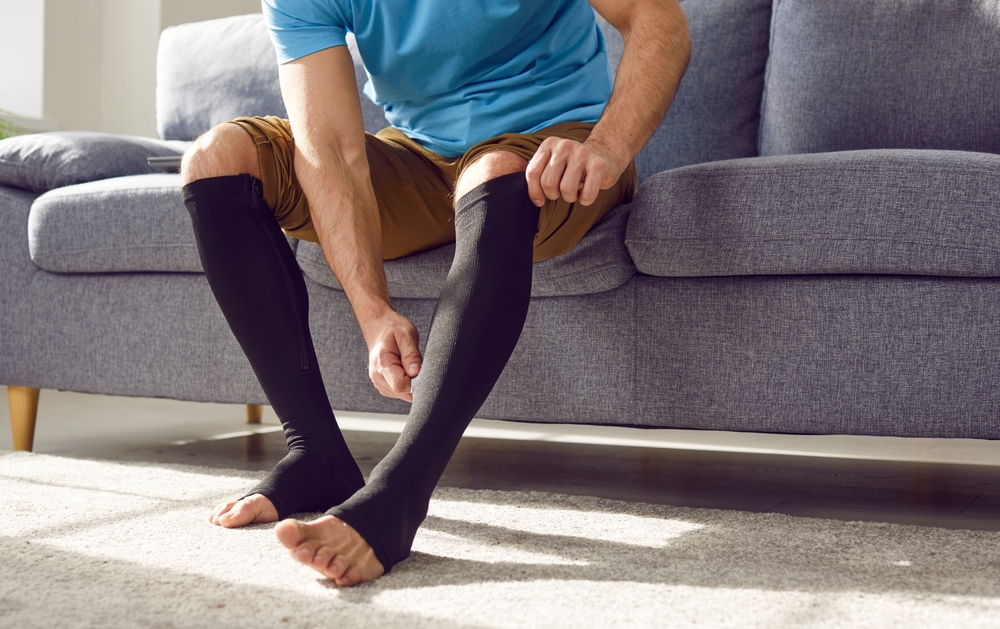
Neuropathy socks, otherwise known as compression stockings, have risen in popularity as a part of neuropathy management. They offer support and enhance blood circulation, reducing pain and swelling and providing comfort for those with peripheral neuropathy. Neuropathy compression socks, also referred to as compression socks for neuropathy, serve as an effective solution for individuals seeking relief and are often considered as ideal socks for neuropathy.
We will further discuss the workings of compression stockings and their role in alleviating neuropathy symptoms.
Understanding Peripheral Neuropathy
Peripheral neuropathy is a condition that affects nerves away from the brain and spinal cord. It is characterized by nerve damage in these parts of the body. This damage can result in neuropathy pain, numbness, and weakness in the feet and legs. Diabetic compression socks can be beneficial for individuals with neuropathy, as they are designed to provide support, improve circulation, and alleviate pain associated with nerve damage.
Research indicates that peripheral neuropathy often stems from high blood sugar levels, commonly seen in diabetes. Given the potential severe outcomes like diabetic foot ulcers, gangrene, and cardiovascular autonomic neuropathy (CAN), effective relief is paramount.
The Science Behind Compression Therapy
Compression therapy serves to increase blood circulation in the affected areas, including the lower legs, ankles, and feet, thereby diminishing symptoms like pain, swelling, and numbness. Compression stockings achieve this by applying gentle pressure to the lower legs, helping to maintain healthy blood flow and reduce swelling caused by poor circulation.
Graduated pressure in compression stockings:
- Delivers the highest pressure at the ankle
- Gradually decreases the pressure as the stockings ascend the leg
- Promotes circulation
- Reduces the risk of blood clots.
Examining the Effectiveness of Compression Stockings for Neuropathy

To grasp the full benefit of compression stockings for neuropathy relief, both clinical studies and patient experiences must be considered. Despite the variability in individual results, the general agreement is that compression stockings can provide relief from neuropathy symptoms like pain and numbness.
We will further examine the evidence that supports the effectiveness of these specialized socks.
Clinical Studies and Evidence
Clinical research has shown that compression therapy is indeed effective in providing relief for neuropathy symptoms. For instance, a recent study demonstrated that compression garments and ice packs were effective in preventing chemotherapy-induced peripheral neuropathy. Furthermore, a meta-analysis of eight randomized controlled trials concluded that compression therapy reduces the risk of post-thrombotic syndrome, and research has demonstrated that compression socks can improve overall blood circulation, which may be beneficial for those with neuropathy.
Patient Testimonials and Experiences
Patients with diabetic neuropathy have reported significant alleviation of neuropathy symptoms, such as:
- the ‘pins and needles’ feeling
- enhanced circulation
- reduced numbness
- increased support and stability
- decreased pain
- improved mobility
These benefits have been cited by patients who wear compression stockings for neuropathy.
However, keep in mind that the best compression socks might not be the best fit for everyone and could potentially worsen symptoms in certain cases.
Choosing the Right Compression Level for Neuropathy Relief
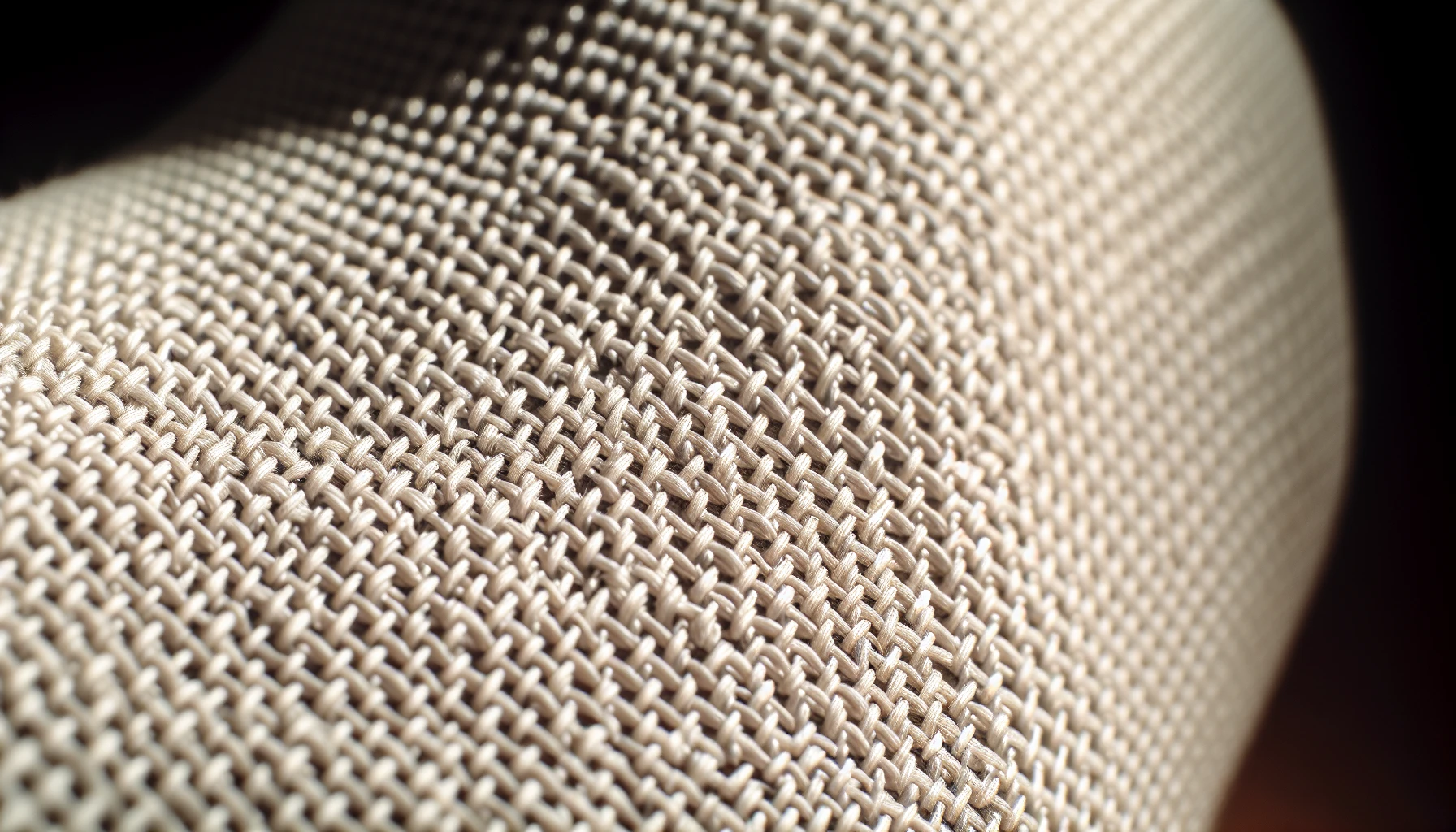
For optimal relief and comfort, choosing the appropriate compression level and size for your specific needs is key. The level of compression and size of the stockings significantly affect the relief and comfort they provide for neuropathy.
Next, we will examine the differences between mild and firm compression levels and discuss the significance of proper sizing.
Mild vs. Firm Compression
Mild compression (15-20 mmHg) is suitable for everyday wear and can help increase blood flow, improve circulation, and reduce discomfort.
On the other hand, firm compression (20-30 mmHg) is recommended for those with pre-existing conditions, such as diabetic neuropathy or severe swelling. By working with your doctor, you can determine the appropriate compression level for your specific needs and ensure optimal relief from neuropathy symptoms.
Sizing Matters
Correct sizing is key for comfort and effectiveness, as stockings that don’t fit well can exacerbate symptoms and hinder blood circulation. For the right measurements for compression stockings, measuring the calf circumference at its widest part and referencing a sizing chart to find the suitable size is necessary.
By selecting the appropriate size, you can maximize the benefits of compression stockings and minimize any potential side effects.
Comfort and Wearability: Essential Features of Neuropathy Compression Stockings
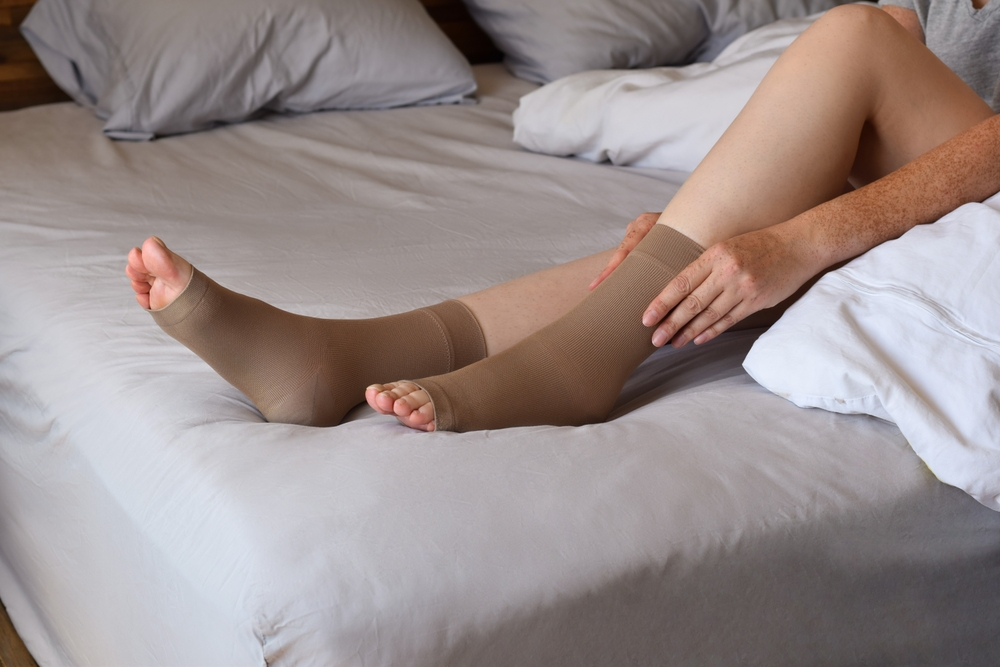
When selecting compression stockings for neuropathy, comfort and wearability are just as important as the level of compression. Features such as moisture-wicking fabric, non-binding tops, and seamless designs can make a significant difference in your overall experience with compression stockings.
We will further examine these fundamental features.
Moisture-Wicking Fabric
Moisture-wicking fabric is a key feature to look for in compression stockings for neuropathy, as it helps keep your feet dry and creates a healthier environment. This type of fabric:
- Absorbs moisture
- Prevents excessive sweating
- Reduces discomfort
- Minimizes skin irritation
Choosing compression stockings made with moisture-wicking fabric helps keep your feet dry and comfortable all day.
Non-Binding Tops and Seamless Designs
The Non-binding tops and seamless designs provide essential features to look for in compression stockings for neuropathy, as they prevent irritation and pressure on sensitive areas. Non-binding tops provide a comfortable fit without constricting or digging into the skin, while seamless designs minimize friction and irritation on the skin.
Selecting compression stockings with these features guarantees a comfortable and effective experience.
Addressing Common Concerns About Wearing Compression Stockings

As with any treatment, addressing common concerns and ensuring correct usage for maximum benefits is vital. Next, we will discuss the recommended daily duration for wearing compression stockings and provide guidance on potential side effects and how to mitigate them.
How Long Should You Wear Compression Stockings Each Day?
Wearing compression stockings during the day is recommended, with no added benefit to wearing them at night. It’s generally advised to put on compression stockings in the morning and take them off before bedtime, as wearing them throughout the day can help promote circulation and reduce swelling associated with neuropathy.
Consult with your doctor to determine the best duration of daily wear for your specific needs.
Possible Side Effects and How to Mitigate Them
While compression stockings can provide relief from neuropathy symptoms, it’s important to be aware of possible side effects and how to mitigate them. Potential risks associated with wearing compression stockings for neuropathy may include:
- Minor bruising or skin ulcers
- Dry skin
- Redness
- Itching
- Potential nerve compression
It is important to monitor your symptoms and consult with a healthcare professional if you experience any discomfort or adverse reactions.
To reduce the likelihood of these risks, ensure proper fit and consult with a healthcare professional.
Additional Benefits of Compression Stockings Beyond Neuropathy
Beyond providing relief from neuropathy symptoms, compression stockings have additional health benefits, including:
- Preventing leg swelling
- Warding off health issues like blood clots, varicose veins, spider veins
- Promoting blood circulation
- Reducing pain and discomfort
By incorporating compression stockings into your daily routine, you may experience improved overall health and well-being.
How to Integrate Compression Stockings Into Your Neuropathy Treatment Plan
Effective integration into your treatment plan is necessary for optimal neuropathy relief from compression stockings. This might require consulting your doctor to determine the suitable compression level and fit for your needs and combining therapies for maximum relief.
Next, we will discuss strategies for incorporating compression stockings into your neuropathy treatment plan.
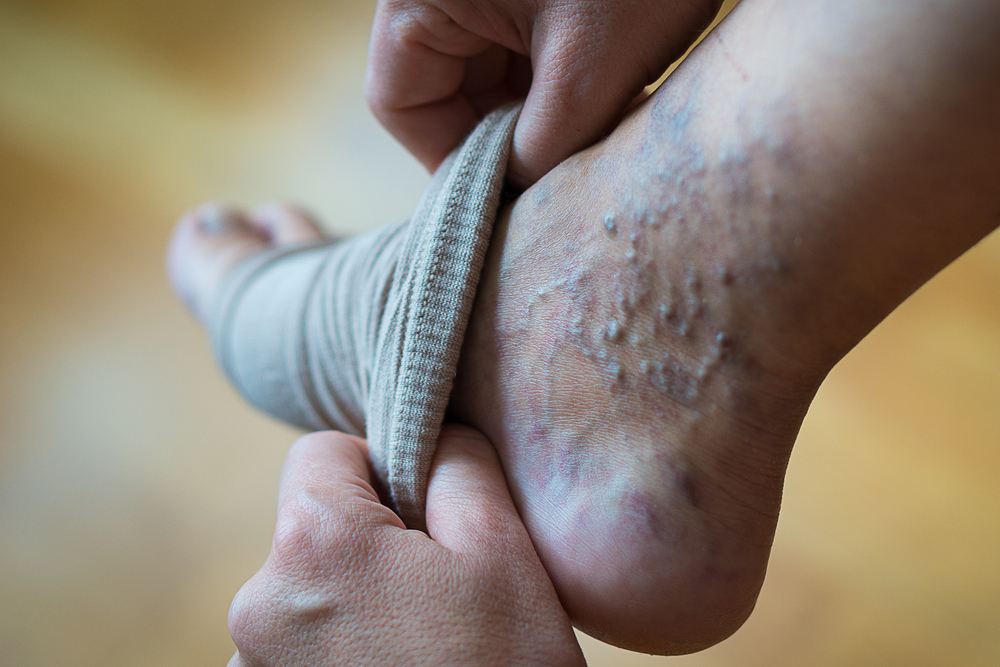
Working With Your Doctor
Consulting with your doctor helps determine the best compression level and fit for your specific needs. They provide personalized advice and guidance, taking into account the severity of your neuropathy, your overall health condition, and the specific symptoms you experience.
Working closely with your doctor ensures optimal relief from neuropathy symptoms and helps to relieve pain using compression stockings.
Combining Therapies for Maximum Relief
Combining compression therapy with other treatments, such as medication and lifestyle changes, can provide optimal neuropathy relief. For example, research suggests that cryo-compression (a combination of compression and cold therapy) and exercise are effective combination therapies for neuropathy involving compression stockings.
Exploring various treatment options and collaborating with your healthcare team allows you to develop a comprehensive treatment plan that addresses all aspects of your neuropathy.
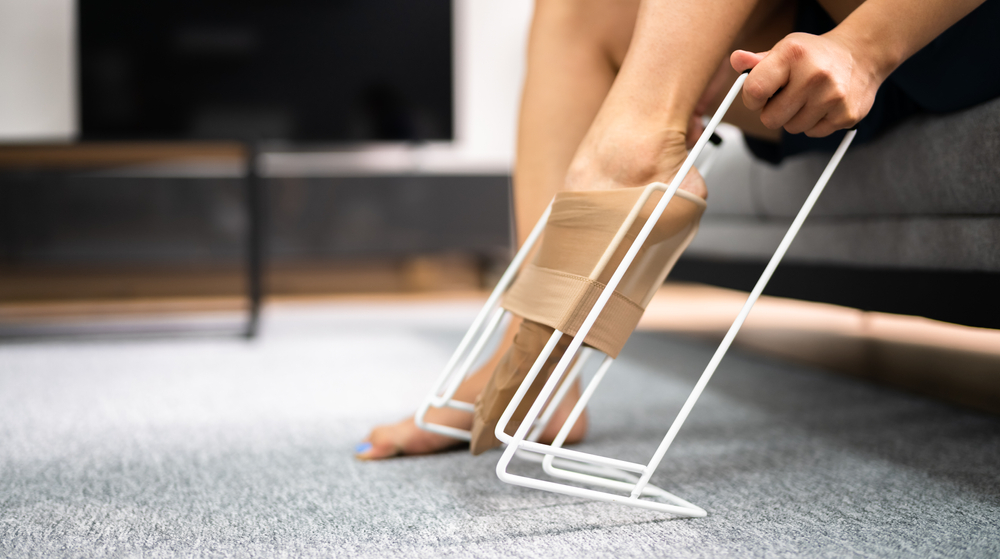
The Best Compression Stockings for Neuropathy: Features to Look For
In the selection of the best compression stockings for neuropathy, consider features such as:
- Moisture-wicking fabric
- Non-binding tops
- Seamless designs
- Appropriate compression levels
Choosing stockings with these features ensures maximum benefit from your compression therapy and effective management of your neuropathy symptoms.
Comfort and health
Remember, wearing suitable compression stockings can significantly enhance your daily life and overall comfort, so it’s important to wear compression socks that fit your needs. Many people are already experiencing the benefits of wearing compression socks.
Summary
In conclusion, compression stockings can be a game-changer for those suffering from neuropathy. By improving blood circulation, providing support to affected areas, and offering comfort, they can help alleviate pain, reduce swelling, and improve quality of life for neuropathy patients. It’s important to work with your doctor to determine the best compression level, fit, and features for your specific needs and to combine therapies for maximum relief. Don’t let neuropathy hold you back – explore the benefits of compression stockings and take control of your symptoms today.
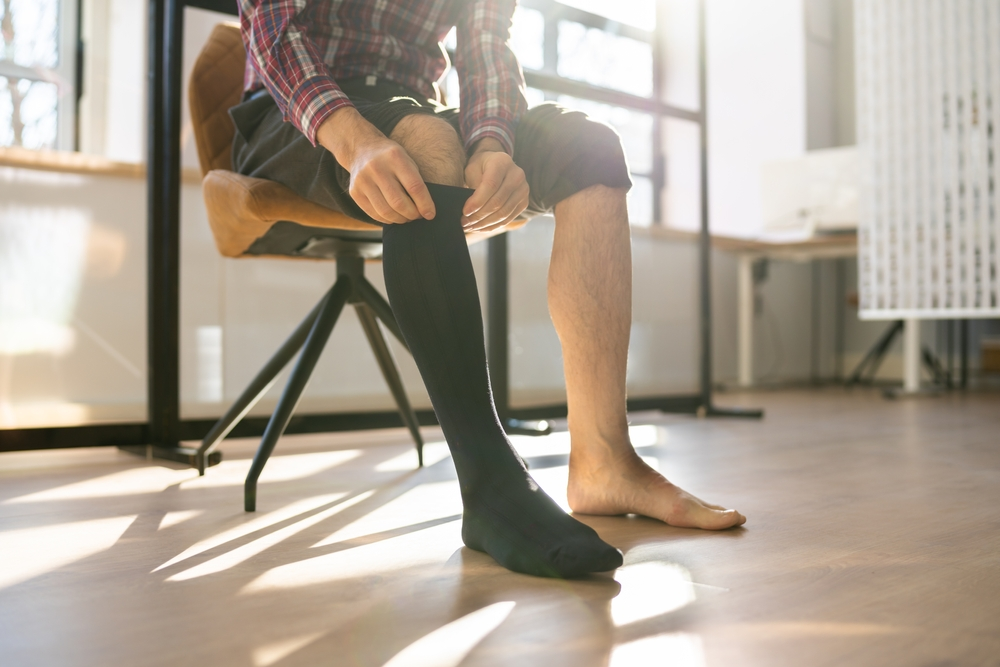
Frequently Asked Questions
How long should you wear compression socks for neuropathy?
For neuropathy, wear compression socks throughout the day and take them off before bed. Ensure you have 2 pairs of stockings to alternate between wearing and washing. Enjoy 20-30 mmHg of supportive pressure and be able to use them while exercising, working or relaxing.
Do compression socks help with numbness and tingling?
Compression socks have been found to be an effective tool for symptom relief for neuropathy patients, as they enhance circulation which can help reduce feelings of numbness and tingling.
When should you not wear compression stockings?
Compression stockings should not be worn by those with circulation disorders in leg arteries, heart conditions, sensory impairments due to diabetes, or nerve damage.
What is the best treatment for neuropathy in the legs and feet?
To best treat neuropathy in the legs and feet, conservative measures such as managing diabetes better, pain medications, physical therapy, casting, acupuncture, and messages should be taken. Additionally, regular exercise such as walking, yoga, tai chi, or swimming can lower neuropathy pain, improve muscle strength, and help control blood sugar levels.
What kind of socks are best for neuropathy?
Compression socks are the best choice for neuropathy since they reduce swelling and enable healthy blood flow, which are both beneficial for those with this condition.
What are compression boots for neuropathy, and how do they work?
Compression boots for neuropathy are therapeutic devices designed to improve blood circulation and muscle soreness in the lower extremities. These boots use compression technology to apply gentle pressure to the legs, promoting better blood flow and reducing symptoms associated with neuropathy.
Related Reading

